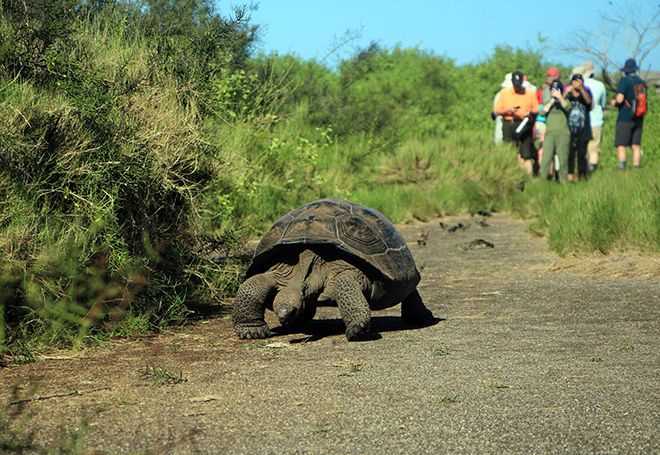Named after Queen Isabel, the island of Isabela this is the largest of all Galapagos Islands. The volcanoes that make up Isabela are still very active, and the most recent eruption occurred just last year. Urbina was our landing site, with a black sand beach where turtles annually lay eggs. The area is vast and heavily vegetated, for it has rich volcanic soil where numerous plants grow to provide food and shelter for sea birds and birds, as well as shade for reptiles like giant tortoises and iguanas, which also nest here. Some giant tortoises were seen during our hike, as well as some big yellow land iguanas.
The last stop of our excursion was the beach where we took a dip to cool off or to explore the underwater life. Turtles and pelicans were seen actively feeding.
The afternoon at Tagus Cove was no less exciting, and our guests had several options like kayaking or paddle-boarding to begin with. Later we went snorkeling for the possibility of penguins, cormorants, turtles, fish and more. Some of us even saw a huge manta ray in the water—awesome!
After our water activities, we continued our exploration with an invigorating hike to view Darwin Lake. Others went for a Zodiac ride to find exquisite wildlife like penguins, cormorants, pelicans, boobies and more.
Sunset signaled that the day was coming to an end, and it was time to head back to National Geographic Endeavour II. We returned happy and tired, ready to rest up for more excitement tomorrow.







